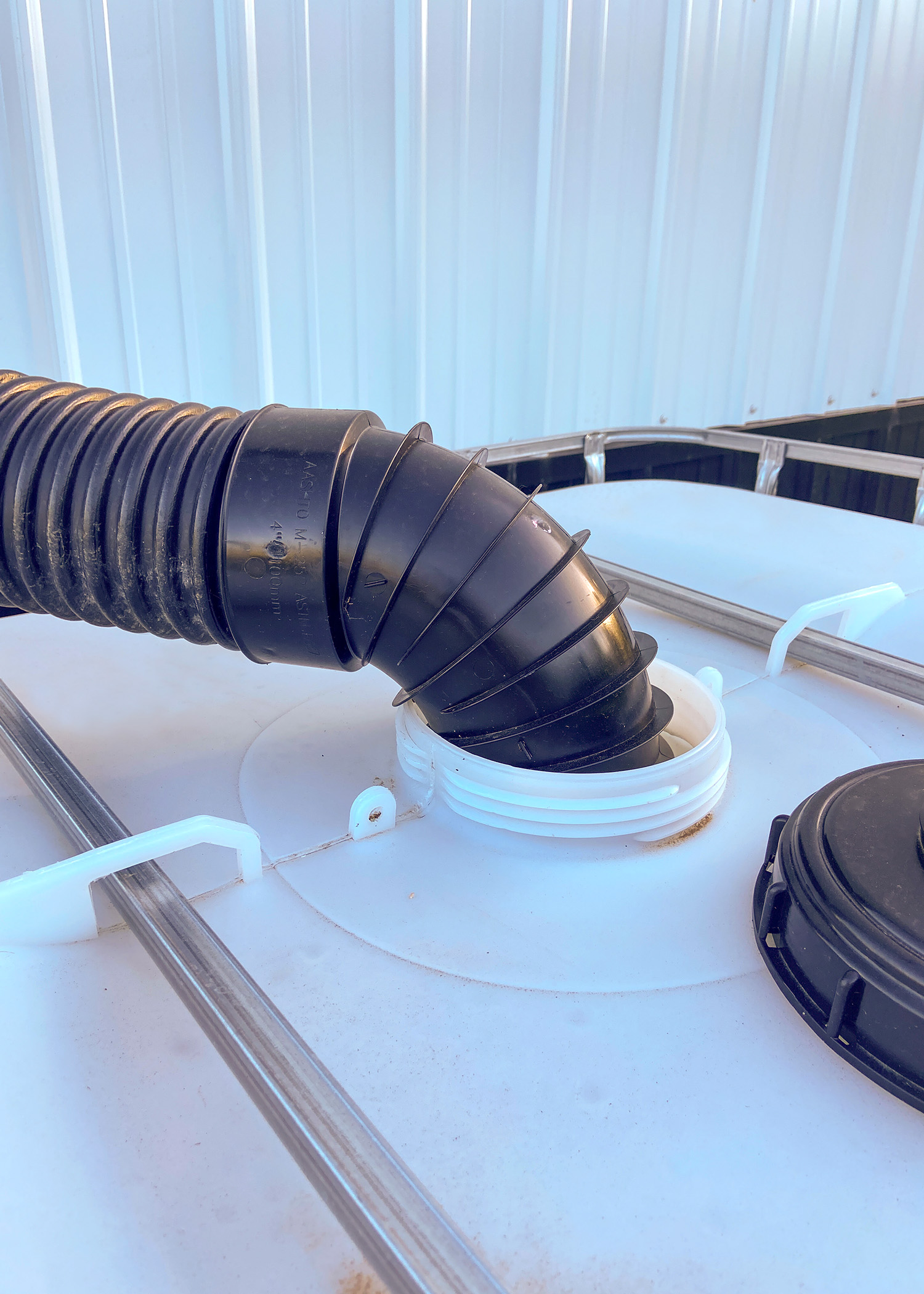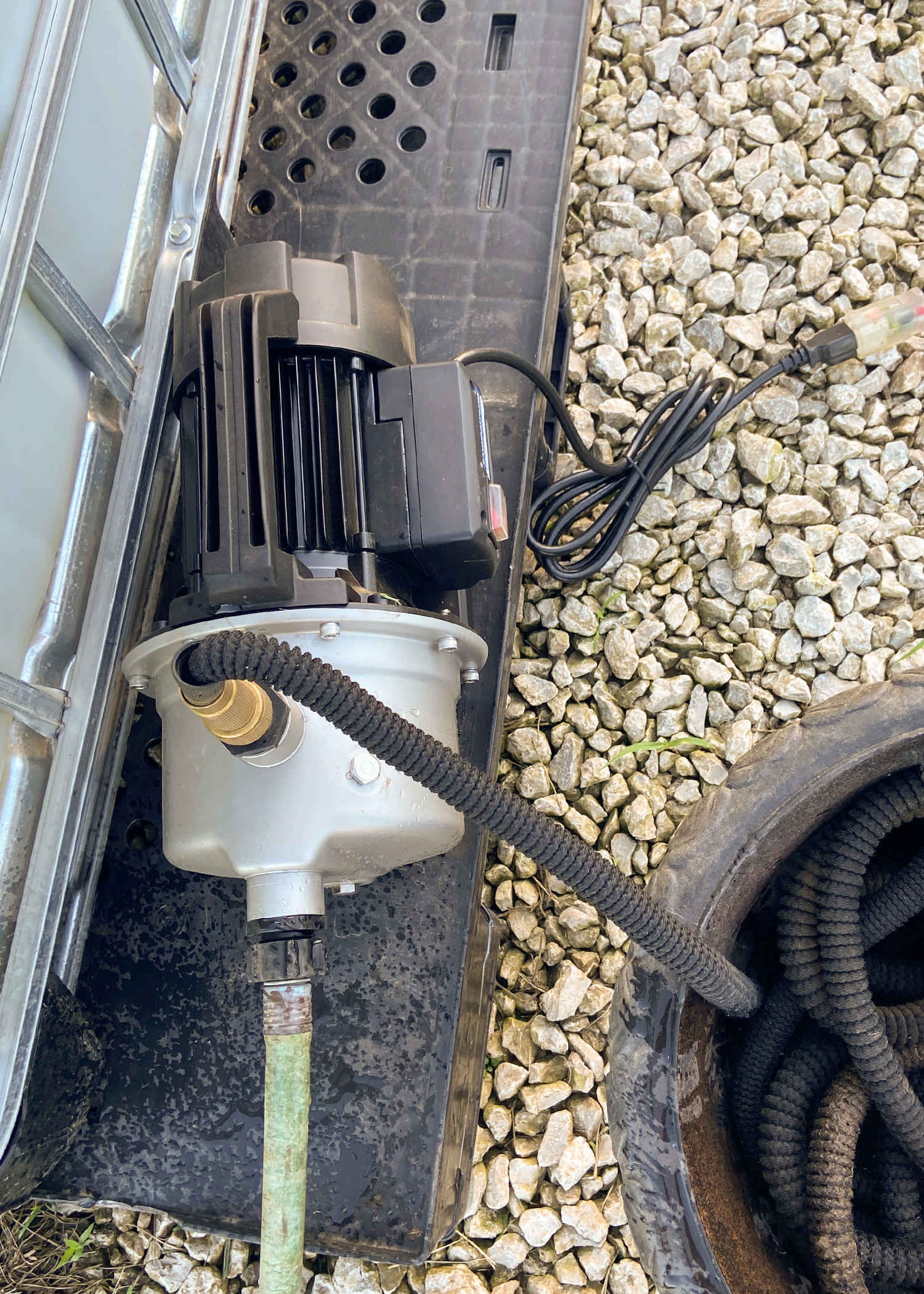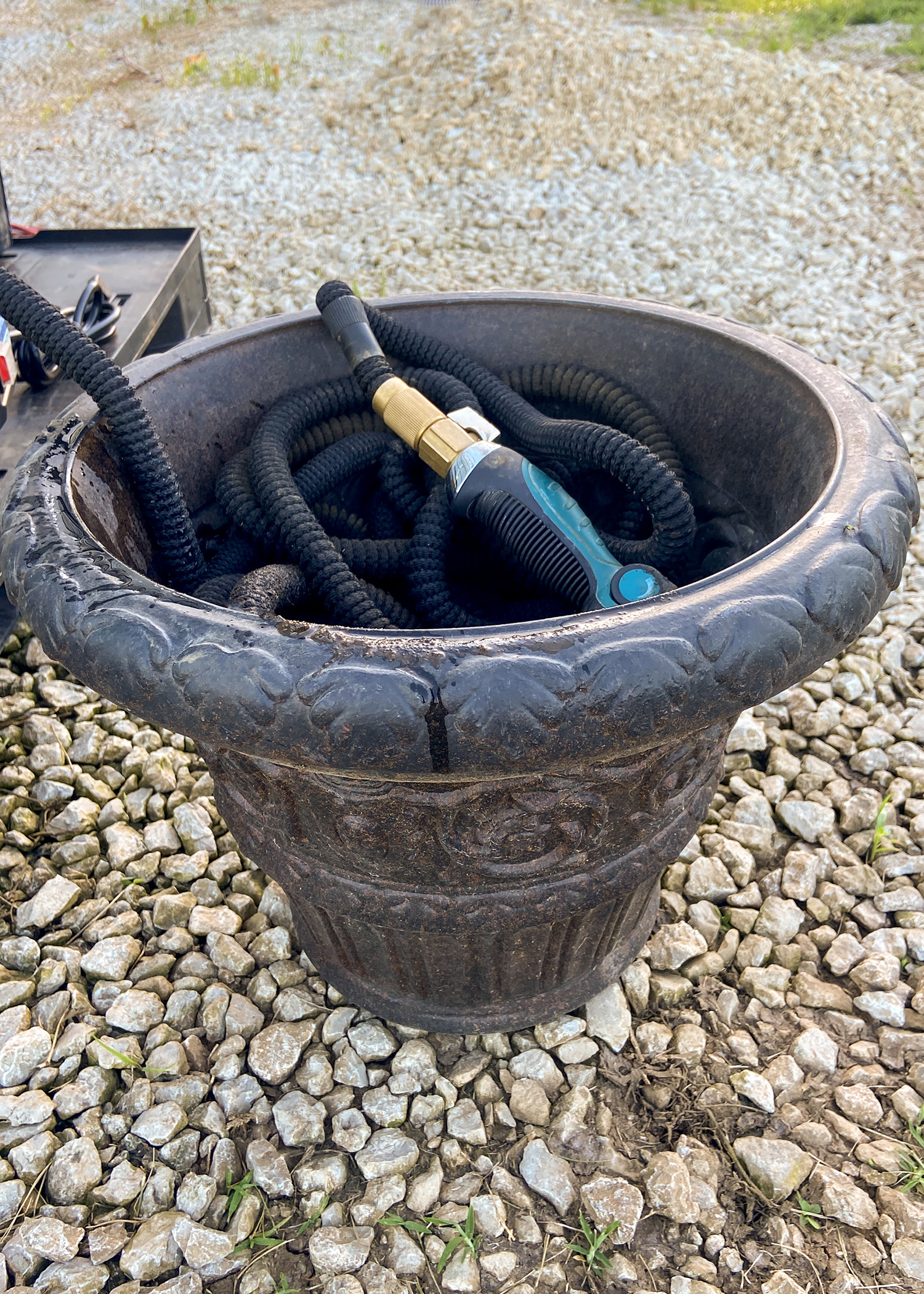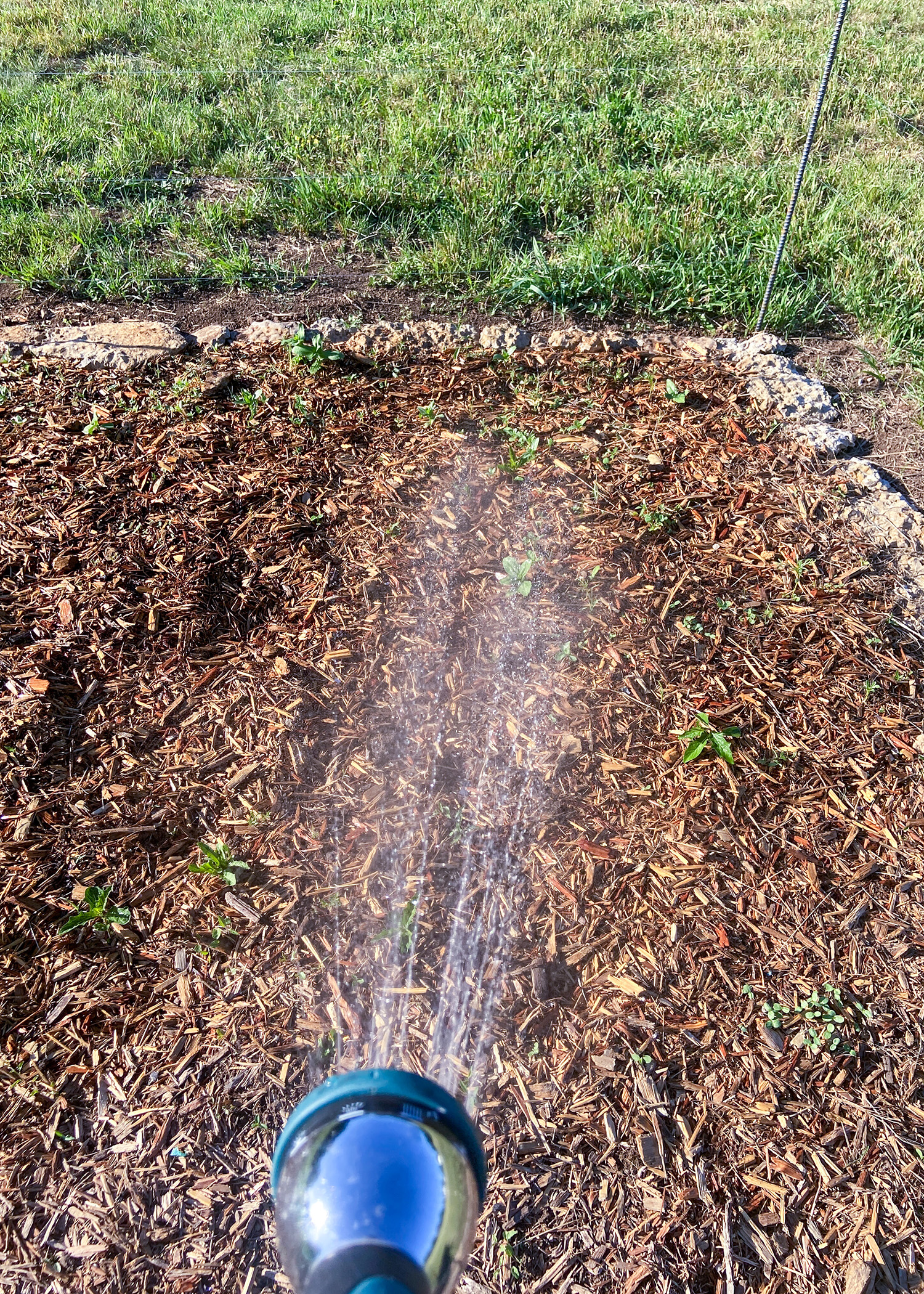

BARN RAINWATER COLLECTION SYSTEM | DIY
06/12/2024Earlier this spring I had the bright idea that I wanted a wildflower/sunflower/pumpkin patch on part of our 5 acres behind the barn because room for more raised garden beds in the backyard has run out. “It won’t be anything fancy”, I said to my husband. “We’ll just remove the grass, and I’ll scatter the seeds.” Sounds simple, right? Famous last words. Let’s just say, work on that small patch about killed me digging out bucket after bucket of rock as far down as I could, installing something inexpensive to hopefully keep the deer at bay, lining the bed to make weeding/mowing/trimming as simple as possible, deciding to add arches for the pumpkins to grow up to allow room for more varieties. Oh, and then figuring out how to water during the hot days of summer with no water source close. The patch will be a learning process this year to see if enough rock was removed for everything to successfully grow.


But we have water so keeping everything hydrated won’t be an issue. My husband set up a rainwater collection system that allows me to water the wildflower/sunflower/pumpkin patch as needed.

We are definitely not experts in rainwater collection but, after some online research, this is what he put together. The metal barn, just feet away from the patch, happened to be perfect for collecting water. We read that it’s not recommended with shingles because of the chemicals in the roofing materials. Our water won’t be used for anything edible, but, at any rate, we don’t have to worry about chemicals with the metal roof on the barn. My husband purchased a used food grade IBC tank on Facebook Marketplace for $80 which he then took to the car wash to make sure it was cleaned out well. Once clean, he placed it on a plastic pallet he already had to elevate the tank off the ground and make it easier to access the water nozzle.

He used flexible tubing and a downspout adapter to connect to the existing guttering.

There is a cap that can be screwed on when rain is not expected to keep mosquitoes from breeding in the water.

He bought a small pump to allow the water to pull from the tank through the hose. Thankfully, he is an electrician so it was simple for him to add a electrical outlet to the barn to plug in the pump. However, until the outlet was installed, we just used an extension cord from inside the barn to power the pump.

He added adapters that screwed onto the tank to attach a section of an old hose between the tank and pump.


We added an expandable hose to the pump for watering since it shrinks up for storage when not in use. I used an old flower pot to store the hose neatly out of the way.


The system is tucked away on the back side of the barn

When I need to water, I just turn the nozzle on the tank, turn on the pump and pull the hose out to the garden bed.

The water pressure is just like it’s coming from the faucet on our house and works perfectly for watering in the field with no other water source available.


A few things to note when using a similar rainwater collection system:
Collected rainwater should be used regularly to keep the water from stagnating and creating bacteria in the tank.
The tank should be cleaned regularly to remove any dirt, debris or bacteria. We will either use a power washer or take the empty tank to the car wash to clean. Thankfully, we have the capability to easily move and transport the tank as necessary.
When our town imposed water restrictions for almost a week due to a problem with the water tower, I was so thankful for our little DIY rainwater collection system. Now, with any luck, we’ll have a thriving wildflower/sunflower/pumpkin patch very soon.







